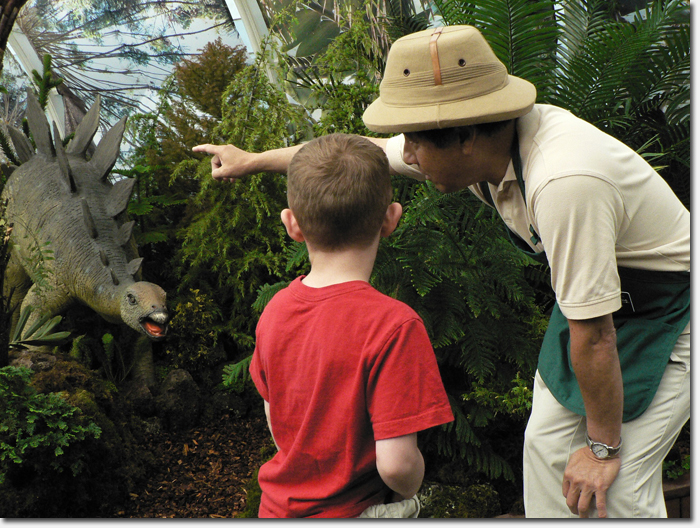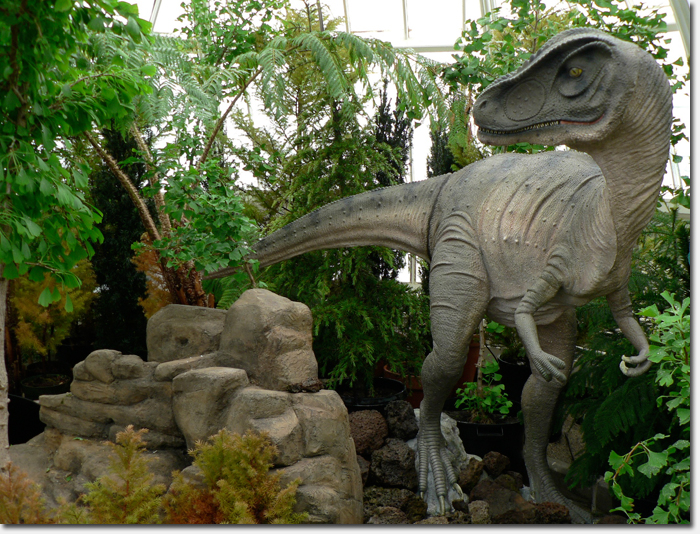
Photo by Nina Sazevich | Conservatory of Flowers
It’s too bad the dinosaurs died off millions of years ago. If they’d survived, they would have found some tasty treats at the new Plantosaurus Rex exhibition that opened yesterday at the Conservatory of Flowers in Golden Gate Park.
We’ve all learned the names of the dinosaur greats like Stegosaurus, Tyrannosaurus Rex, but how much do you know about what they ate and how they survived? Platosaurus Rex recreates a prehistoric paradise, displaying the giant ferns, spiky horsetails, and primitive cycads that grew in abundance and fed many of the monstrous reptiles that roamed the earth millions of years ago.
Tucked in with the plants on display are larger than life dinosaur models – you may have spotted the T-Rex’s head popping through the ceiling of the Conservatory as you passed by on JFK Drive. In one section of the exhibit, visitors come face to face with a scale model Meganeura, a massive dragonfly-like creature with a wingspan of over 2 feet. It’s the largest insect that ever lived.
The exhibition follows a timeline through various prehistoric eras, starting with the Triassic Period (250 to 205 million years ago), when the hot, dry climate forced plants to be near water to survive. Ferns, cycads, and lycopods (club mosses) are the horticultural heroes of this period.
Next up is the Jurassic Period (approx. 206 to 144 million years ago), known as the heyday for dinosaurs. Pangea had split in two creating new coastlines, and a warmer, wetter climate – the perfect environment for plants to thrive. The dominant land plant species of the time were non-flowering, fruitless seed plants including Gingko and conifers like Araucaria along with another important dinosaur food, horsetails.
Last up is the Cretaceous Period (approx. 144 – 65 million years ago), when flowering plants first came on the scene. Orchids, water lilies, and magnolias dominate this section of the exhibition. Well, the real dominate character is the giant, 23 foot tall T-Rex model among the plant life, but unlike the real thing, this one won’t bite.
The Conservatory has created a booklet for the exhibition that helps guide visitors through the different eras, and includes activities for younger dinosaur seekers. Docents are also on hand to share fossils.
Plantosaurus Rex runs through October 21, 2012. The Conservatory of Flowers is open Tuesday through Sunday from 10am until 4:30pm (last entry at 4pm). Put on your best paleontologist gear and head on over!
Sarah B.

Photo by Nina Sazevich | Conservatory of Flowers

Photo by Nina Sazevich | Conservatory of Flowers
2 Comments
Comments are closed.